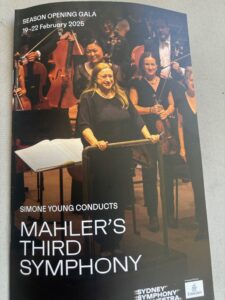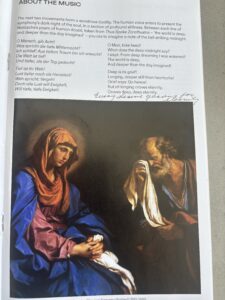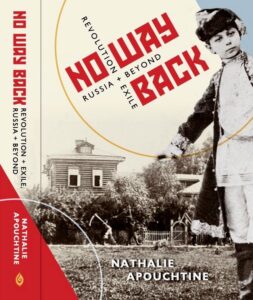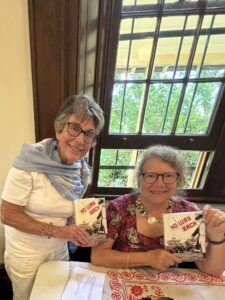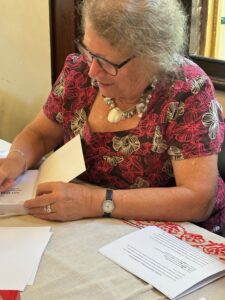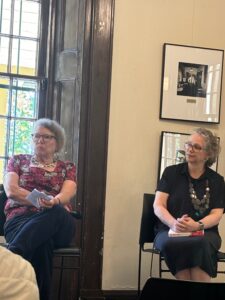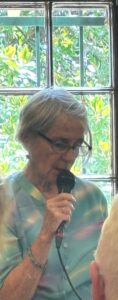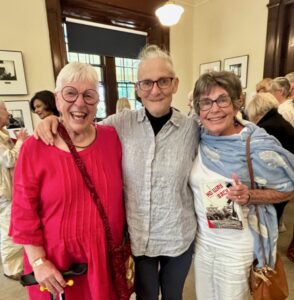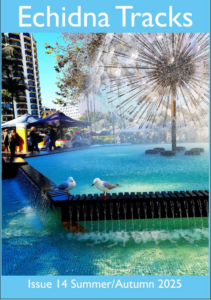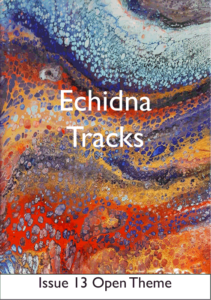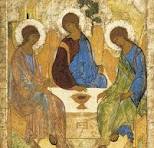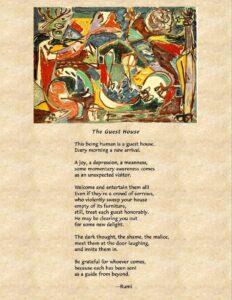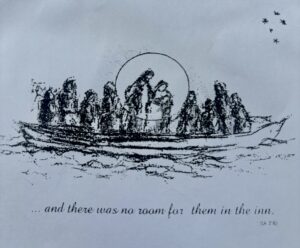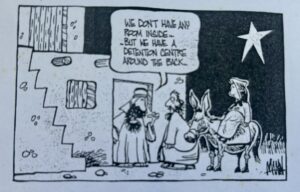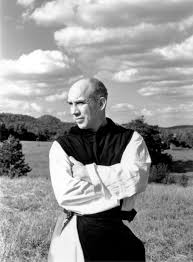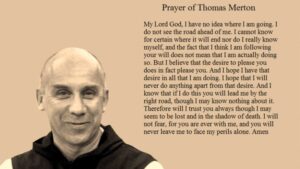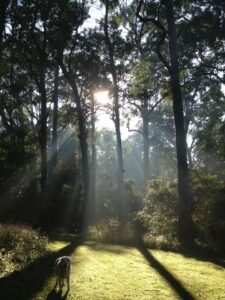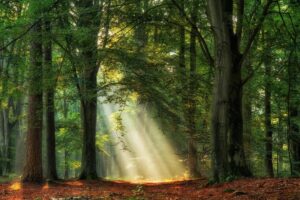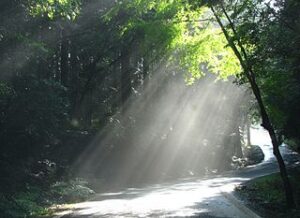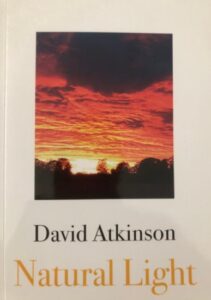
CAPTURING THE HUMAN CONDITION:
COLLEEN KEATING REVIEWS NATURAL LIGHT
BY DAVID ATKINSON.
A Review of Natural Light by David Atkinson
Review by Colleen Keating
Reviewed by Colleen Keating
Natural Light
by David Atkinson
Delphian Books
ISBN 978-0-6486276-8-5
“With an acute lyrical touch and an unerring ability to evoke sights, sounds and sensations, David’s poems reveal new depths upon every rereading.” These affirming words by Richard Clark who recently launched ‘Natural Light’, come from an appreciation of the rich use of imagery, and the way in which the poet, speaks to his readers.
This new book is David Atkinson’s third published poetry collection after ‘The Ablation of Time’ (2018) and ‘Strands and Ripples’, (2021) both published by Ginninderra Press. The poet grew up in the Riverina and knowing this, the reader can appreciate the way he pays reverent attention to the landscape, the birds, the sheds, tools, country roads, road kill and the Hume’s long-snaking journey to connect with the city.
‘Natural Light’ is a striking book, full of original images, capturing the human condition and the natural world. These are broad themes and longstanding interests of the poet. An example of this is from ‘Whipcord’,
Transfixed, we swerve in aversion, wary and watchful,
as the brute, terror of the imagination,
topic of tales, slithers away.
Piques a flashback to that folio of boyhood fears;
an eastern brown slides through a dream.
The Holden accelerates, the small boy braces,
steeled like a vehicular strut, then the weight
of the work boot, as breaks squeal
in a controlled skid through the writhing backbone.
Atkinson holds his memories, sets himself the task of researching a subject and then works them into a poem. He plans his poetry to put together a collection of work that shows variety of subject and form, including sonnets and villanelles while falling back into the things he loves and is most comfortable with. Hence we are gifted with a book of poetry that surprises wherever you open its pages.
The poems are arranged into six sections: In the first section titled The Scaffold of Time there are moments of reminiscing. One example of this is, as a child. sleeping on the verandah with his family on a breathless country night,
in the open we are kneaded into nature.
The night breathes a soft–hued concerto,
the wildlife variations.
and
Beyond the strands of ringbarked trees
the muted moon rises
and the stars are glow worms
over the riverine flats.
In ‘Bow Wave’ how wonderful to watch the way the poet shifts us from the country’s hard hot washing day to pondering a dream Manly holiday with memory of his mother,
In the freestanding washhouse she launders
the clothes, her farmer husband’s khakis,
reek of the shearing shed and the killing tree.
After igniting the copper, boils the garments
and bed linen; the spit of split kindling,
the flames prancing in the grate.
Then as reader, we feel the cool ocean breeze with her dream,
the South Steyne churning its bow wave
slamming the subservient wharf.
even as,
Her neck sallow, not yet seared swarthy
by the sun, she groans, heaves the bedsheets,
feeds them into the clothes wringer,
hand-operated, the water squeezed down
flowing, gurgling into the drain.
This scene is part of my own memory of helping my mother and grandmother but I wonder what the next generation will picture here. Whatever, it is important for this weekly chore to be honoured .
In the poem ‘Generations of Ritual’, the imagery shows how the fates have determined the change and similarity in our lives with the colourful phases,
The pungency of lucerne hay,
the prickle of the fleece’s burrs.
the taste of the moonrise frost
solo star in the top paddock,
In the section, Unswept Wings, there are many gems including the prize winning poem ‘Gang Gang’,
When you sweep in, deep wing beats,
you skim along the runaway of azalea blooms.
In an ambience of apricity, I observe
your free flight through the bush reserve;
I know why this time you alight alone.
I watch your actor’s bow to the water,
curved beak leading to its cere,
eye staring off across your canopied
territory of eucalypts;
Another award-winning poem, ‘Wedge-tailed Eagle’
takes us deeper,
In a rhythm of etiolated recall my spirit
aches for the passing of the years.
The fundamentals seem to have been recast,
a perception of having taken
a long journey to the interior.
The moment to explore the season
with Vivaldi, to grasp the assertion,
the fretwork of the river red gum.
At last the opportunity but I am ageing
and my soul yearns for peace.
Time is transient and pitiless;
I must seek out the resting ripple
of the remote and elusive platypus
in the headwaters of the Coxs River
and turn back to accompany you
on your buoyant ascent.
In the section Anchored, one poem ‘The Challenge of Algebra’ stands out for its thoughtful attention to our wider broken world with the final lines;
Faith is a trait which cannot
be contained; it bubbles
and spurts like water
from an underground spring,
from a young maths student pinned
under the earth of Mariupol
Further sections are The Ochre of Dawn, Light on the Breeze,
and in the last section titled Interwoven
I especially appreciate ‘Villanelle of the Drought’,
‘the yawl of callous crows; he dreads their shriek
alighting on a victim in the glare.
The stricken ewe has slumped, half-starved and weak.
Poems are honed with short, sharp words that give a sense of urgency. In the poem ‘The Old Hume’, Atkinson recounts a trip to Sydney as a young boy, with the rhythm of the road, its bucolic smell and heat. The light hits that memory as a young boy remembers the sticky heat of the vinyl under his hand and he is jolted by the change in towns now dead and the speed of progress.
As Richard Clark commented in his launch, Atkinson is a master of enjambement and I was interested to spend some time observing his skilful working of this technique. How it draws the reader in. I say this because I especially relate to his portrayed country world of the 60’s with the droughts and struggles, having spent my childhood in the country albeit a different direction, The New England Tablelands.
This is a journey book. Atkinson uses learnings especially from the birds, with their lightness of being and so opens the perspective of being untethered and free. He comes to a finality with family that brings him home.
‘Natural Light’ is a worthy collection, full of surprises. Poems that shine like gems, many illuminating the way, many with their beauty in the natural light alone. We are gifted with the opportunity to pause and contemplate their translucence.
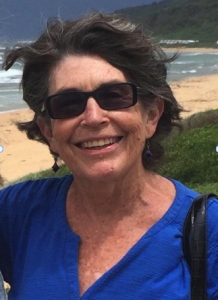
Colleen Keating is a Sydney poet. Her recent poem The Two Canticles was winner of the Phillipa Holland Poetry 2024 with Eastwood /Hills FAW (Fellowship of Australian Writers) and is published in Rochford Street Review Issue 40 – 2024:2. Her poem,Fifth Symphony was awarded Highly Commended in the Poetic Christi Press poetry competition and published in the new Anthology A New Day Dawns 2024. Colleen has published six collections of poetry, including two award-winning verse novels, Hildegard of Bingen: A poetic journey and Olive Muriel Pink: her radical & idealistic life. Her newly published book is The Dinner Party: A poetic reflection. (2023) All are available through Ginninderra Press. Colleen writes on Ku-ring-gai land in Sydney and Darkinjung on the Central Coast NSW.


